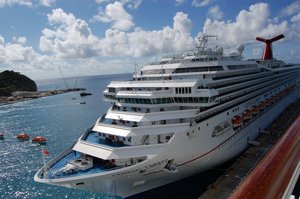Ever since the Titanic, people have wondered if they are safe on a cruise. Despite many technological advances, there continue to be disasters on cruise ships.
Cruise Ship Disasters
There are many disasters that can happen at sea. A passenger on the Carnival cruise ship Holiday went overboard. The engines aboard Princess Cruises’ Royal Princess caught fire. The MSC Melody was attacked by Somali pirates. Princess Cruises struggled with norovirus outbreaks in Alaska. These are merely a sampling of the incidents that occur on cruise ships.
Last year, the Italian cruise ship Costa Concordia ran aground off the Coast of Giglio Island. On its first night from port, people had to disembark from the Costa Concordia into lifeboats. Unfortunately, some died in the tragedy.
Is a Cruise Safe?
In light of these disasters on cruise ships, people are asking, “Are cruises are safe?” If taking a cruise is safe, then are all cruises equally safe? Is one cruise safe, but another not?
These cruise disasters seem to indicate taking a cruise is not safe. People have died at sea. No cruise line has been immune to tragedy, and disasters have struck from Italy to Antarctica.
Cruise Safety in Perspective
News broadcasts of cruise safety failures create a distortion. People focus on the few tragedies, often without considering how many cruises sail each day. Cruises sail from each major port around the world daily. The cruise disasters on the news represent only a fraction of a percent of cruises. The Coast Guard’s Cruise Ship National Center of Expertise Chief, Cmdr. Buddy Reams, says, “Cruise lines are operating on a weekly basis, they’re always at sea and there’s a very, very, very low frequency of these incidents happening.”
Universal Cruise Safety
The cruise industry is regulated by both national and international bodies. The main international organization that oversees cruise safety is the International Maritime Organization (IMO), a division of the U.N. The IMO regulates every aspect of cruise safety, from construction standards to evacuation procedures.
No matter where a cruise sails from, it must meet IMO standards. Therefore, all cruises are equally safe. European, American, Caribbean, and Asian cruises are safe.
Terrorism
In 2004, both the U.S. and IMO instituted security measures to prevent a terrorist attack aboard a cruise ship. These include pre-departure precautions and emergency procedures. These measures kept passengers on a 2009 cruise safe from a Somali pirate attack.
Disaster
The risks of fire and mechanical failure cannot be eliminated. However, the IMO’s standards ensure that ships are built to withstand a disaster, and there are fleets around the world ready to respond in an emergency. The Costa Concordia’s disaster was tragic, but emergency units responded much better than they did decades ago to the Titanic.
Illness
As for health risks from food on cruise ships, the norovirus is the most well-known threat. The CDC estimates that one in 12 Americans get it each year. Yet, only one in 3,600 cruise passengers contract the virus. The health of passengers is taken seriously on cruises, as this statistic reflects.
Cruises are Safe
Despite the news coverage of cruise disasters, cruise ships are generally safe. Accidents occur, but these comprise a very small portion of cruises. The risks involved in cruising are minimal. Passengers on a cruise are as safe as possible.





